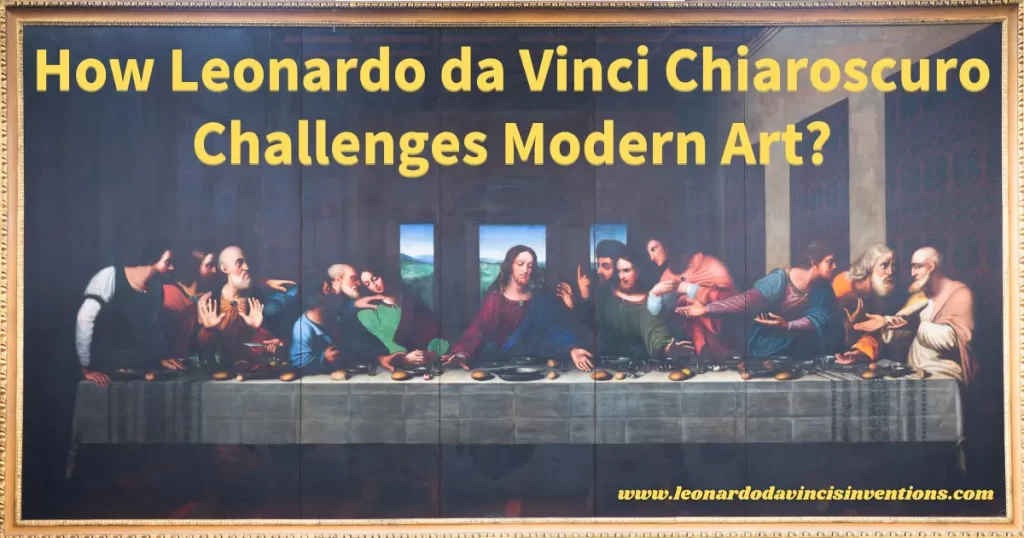
Leonardo da Vinci chiaroscuro often leaves modern artists questioning how much light and shadow can transform a painting.
His approach to strong contrasts gives depth, emotion, and realism, even challenging today’s digital art techniques.
If you are curious about how da Vinci’s centuries-old style continues to influence and push the limits of modern art, this post will explain why chiaroscuro still matters.
You can spot its impact everywhere from galleries to movie screens.
The Foundations of Leonardo da Vinci Chiaroscuro in Renaissance Art
Leonardo da Vinci’s approach to chiaroscuro redefined painting techniques during the Renaissance.
His mastery over light, shadow, and realistic forms set the stage for modern art’s focus on visual drama and depth.
Understanding Chiaroscuro and the Play of Light and Dark
Chiaroscuro comes from the Italian words “light” and “dark.” The term describes the sharp contrasts Leonardo da Vinci used to create lifelike images.
He placed strong highlights next to deep shadows, making objects or figures stand out in three-dimensional space.
Leonardo used light as a tool for storytelling, not just to copy nature.
His handling of light and dark created atmosphere and emotion, turning his paintings into studies of visual drama.
In works like the Mona Lisa, subtle transitions between light and shadow give faces a gentle, believable presence.
Renaissance painters before Leonardo used flatter lighting, but he developed a deeper understanding of how light moves across curved surfaces.
This approach led to a new level of realism and inspired later artists to use chiaroscuro for intensity and focus.
The Role of Contrast and Tonal Gradation in Leonardo’s Artistic Technique
Leonardo paid close attention to value, or how light or dark a color appears.
He blended paint layers to create smooth tonal gradations, making his figures seem to emerge naturally from the background.
As explained on Webexhibits, this technique resulted in a unified sense of form and texture.
He used a range of midtones between the brightest highlights and the darkest shadows.
This subtle shading creates a strong sense of volume, missing from earlier painting styles.
Leonardo avoided flatness by applying gradual tonal changes, bringing his figures to life.
He directed the viewer’s eye and created visual interest, shaping how later artists designed their compositions.
How Leonardo da Vinci Used Modelling to Create Depth and Volume
Modelling, or shaping forms using highlights and shadows, stands at the heart of Leonardo’s technique.
In paintings like The Last Supper, he used soft transitions and blended tones to create believable human figures.
He applied a method called sfumato, which uses fine shading to blur the edges of shadows.
This effect eliminated hard outlines and made surfaces look gradual and smooth, increasing the three-dimensional effect.
Modelling through light and shadow helped Leonardo achieve a greater sense of depth.
His focus on volume and spatial depth set a new standard for painting technique during the Renaissance.
He inspired other artists to experiment with light modelling and shadow play.
The Influence of Human Anatomy and Proportions on Visual Perception
Leonardo’s dedication to studying human anatomy and proper proportions gave his artwork authenticity.
He observed muscle structure, joints, and body movement, allowing him to create figures that moved and breathed naturally.
He used his scientific studies to shape faces and bodies in a way viewers could understand and relate to.
Accurate anatomy made chiaroscuro more powerful because light and shadow matched the real shapes of muscles and bones.
This interest in anatomical precision helped Leonardo achieve empathy in art.
Viewers connect with the emotion and movement in each painting.
His approach represented a shift in artistic traditions, focusing more on naturalism and how viewers perceive form or express emotion.
One-Point Linear Perspective and Its Impact on Innovative Compositions
One-point linear perspective allows artists to create the illusion that space recedes into the distance.
Leonardo da Vinci became an early master of this geometric principle.
In pieces like The Last Supper, he used this method to guide the viewer’s eye straight to the central figure through a clear vanishing point.
This use of perspective created innovative compositions that felt dynamic and organized.
Every object and figure fit together in an ordered space, which added unity to his scenes.
Combining one-point linear perspective with chiaroscuro, Leonardo set new standards for realism and depth in Renaissance art.
His compositions brought together accurate form, light, and spatial arrangement, influencing the development of visual storytelling and modern artistic innovation.
Masterpieces Exemplifying Leonardo da Vinci Chiaroscuro
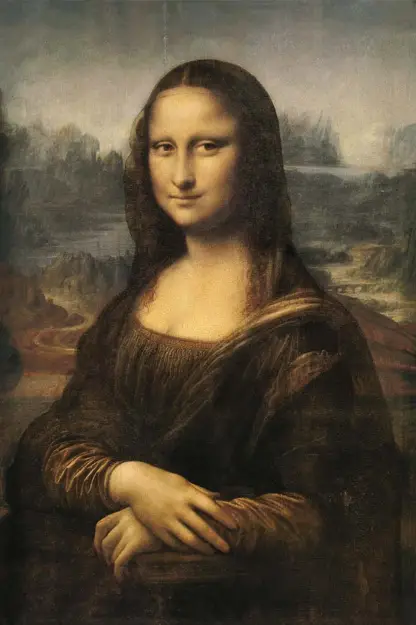
Leonardo da Vinci’s skillful use of chiaroscuro in painting created new possibilities for light, shadow, and realism.
He redefined the modeling of form, emotional depth, and visual storytelling by using precise control over tonal gradation, contrast, and perspective.
Dramatic Lighting and Shadow Play in The Last Supper
Leonardo da Vinci’s The Last Supper shows how chiaroscuro shapes the viewer’s experience.
Leonardo used dramatic lighting in this fresco to draw attention to Jesus at the center.
The figures are sculpted with light and shadow, creating depth and guiding the eye along the table.
He employed a single, unseen light source that creates consistent highlights and deep shadows.
This contrast was rare among his contemporaries.
With careful gradations, Leonardo ensured that each apostle’s expression and gesture felt real.
Perspective and geometry are key.
One-point linear perspective makes the room recede toward Christ, while the interplay of light and dark emphasizes the three-dimensional effect.
Chiaroscuro brings realism and helps structure the narrative, setting The Last Supper apart in Renaissance art.
The Mona Lisa’s Highlights and Three-Dimensional Effect
In the Mona Lisa, Leonardo da Vinci’s use of chiaroscuro gives the portrait its iconic sense of volume and mystery.
Soft, gradual shading—known as sfumato—creates subtle transitions between light and shadow on her face and hands.
This technique allows her features to blend smoothly, without harsh lines separating light and dark.
The shadow under her chin and the gentle highlights on her forehead and cheeks help model her form realistically and give a lifelike quality.
Her enigmatic smile seems to shift depending on where the viewer stands, resulting from Leonardo’s control over shadow and light.
The way he balances highlight and shadow generates a three-dimensional effect.
The Mona Lisa’s gaze and posture appear natural, and her skin seems to glow with an inner light not common in other portraits of the period.
This effect displays Leonardo’s mastery in modelling with light and dark.
Artistic Mastery and Emotional Expression in Leonardo’s Visual Storytelling
Leonardo da Vinci used chiaroscuro to communicate the psychological depth of his subjects.
The play of shadow and highlight models the surface of the face or clothing and expresses complex emotions.
In his drawings and lesser-known paintings, Leonardo uses subtle shadows around the eyes or mouth to create empathy in art.
The viewer is drawn into the sitter’s inner world by his innovative compositions and understanding of human anatomy.
Through careful control of tonal contrast, his works evoke strong feelings and invite viewers to participate in the story.
This emotional expression is a hallmark of Leonardo’s artistic mastery.
Theatrical Effect and Visual Drama as Tools of Artistic Innovation
Leonardo da Vinci pioneered theatrical effects and visual drama to enhance the narrative power of his paintings.
He created scenes where figures emerge from darkness into focused beams of light, increasing the sense of drama and anticipation.
In his compositions, Leonardo staged light sources to highlight moments of tension or revelation.
The chiaroscuro technique adds suspense, making each painting feel like a scene on stage.
By controlling the interplay of light and shadow, he pushed the boundaries of what painting could achieve.
This artistic innovation shaped how future artists approached visual drama and theatrical effect.
Renaissance Traditions and Leonardo’s Unique Approach to Painting Techniques
Leonardo da Vinci built on Renaissance traditions but developed a unique approach to painting techniques.
While other Renaissance painters used light and dark, Leonardo’s method was more refined and systematic.
He studied how light interacts with objects, observing real life to understand texture, form, and geometric principles.
This scientific mindset made his application of chiaroscuro more truthful and consistent.
His layering of oils and glazes enabled soft transitions and lifelike skin tones, setting his work apart from earlier artists.
By mastering this technique, Leonardo set a standard for realism and naturalism in Renaissance art.
He influenced future painters and expanded the possibilities of artistic experimentation.
Comparison of Chiaroscuro, Sfumato, Linear Perspective, and Fresco in Leonardo da Vinci’s Art
| Feature / Technique | Chiaroscuro | Sfumato | Linear Perspective | Fresco |
|---|---|---|---|---|
| Definition | Use of strong contrasts between light and dark to create depth and volume | Soft, gradual blending of colors and tones to eliminate harsh edges | Technique to create the illusion of depth using converging lines | Painting on wet plaster, allowing pigments to merge with the wall surface |
| Purpose | Enhance three-dimensionality and dramatic effect | Create realistic, smoky transitions and atmospheric effects | Achieve realistic spatial depth and proportion | Durable mural technique for large-scale wall paintings |
| Visual Effect | Bold shadows and highlights emphasizing form | Soft edges and hazy outlines for naturalism | Accurate depiction of spatial relationships | Matte, integrated surface with vibrant colors |
| Use in Leonardo’s Work | Adds volume and emotional intensity (e.g., The Last Supper) | Creates lifelike skin tones and soft transitions (e.g., Mona Lisa) | Organizes composition and depth (e.g., The Last Supper) | Used in wall paintings, though Leonardo preferred other media |
| Artistic Impact | Creates visual drama and contrast | Enhances realism and subtlety | Provides scientific accuracy in spatial representation | Preserves large-scale narrative scenes |
| Related Concepts | Light and shadow, modelling, tonal gradation | Blending, atmospheric perspective, softness | Geometric principles, vanishing point | Pigment absorption, plaster chemistry |
How Leonardo da Vinci Chiaroscuro Challenges Modern Art Practices
Leonardo da Vinci’s use of chiaroscuro set new standards for depth, light, and emotional engagement in painting.
His methods shaped the visual language artists use today to explore realism and innovative artistic expression.
Revisiting Artistic Experimentation and Texture in Contemporary Works
Leonardo da Vinci’s artistic technique of layering light and dark brought a new level of texture to painting.
He applied oil glazes in thin layers, a method known as sfumato, giving his subjects a soft, realistic quality.
This approach highlights form without harsh lines and lets artists create depth with subtle transitions.
Modern artists continue to experiment with these methods.
Painters today often play with materials and surfaces to produce textured effects, but Leonardo’s precise control over paint and light still pushes them to reconsider how they achieve realism.
They look back at works like the Mona Lisa, noting how its lifelike skin and background result from careful use of texture and contrast.
Balancing Realism and Naturalism Through Light Modelling and Shadow
Leonardo mastered light modelling using highlights and shadows to create a three-dimensional effect. In paintings such as The Last Supper, he placed a strong light source and shaped each figure’s features by adjusting the strength of the shadow and the placement of each highlight.
Today’s artists, even using digital tools, rely on similar light and shadow techniques to add realism and drama. The practice of modelling objects with tonal gradation, just as Leonardo did, remains critical for producing depth and making scenes appear lifelike.
He set the precedent for modern practices by linking careful observation of light to naturalistic representation in art.
The Legacy of Geometric Principles and Form in Modern Visual Arts
Geometry played a central role in Leonardo’s art. He used one-point linear perspective and precise proportions to create realistic illusions of space and volume.
The clear structure of his paintings shows his deep understanding of form, anatomy, and the mathematics of art. Modern artists use these geometric principles to craft convincing three-dimensional space on flat surfaces.
Leonardo’s work balances visual drama with mathematical proportion and continues to inspire artists who blend abstraction and realism. His geometric insights remain foundational to composition and form in today’s visual arts.
Empathy in Art and Emotional Expression Inspired by Leonardo’s Techniques
Leonardo da Vinci set himself apart by infusing his subjects with empathy and subtle emotional cues. His chiaroscuro technique lets him control the mood, making faces and gestures seem human.
This skill is clear in works like the Mona Lisa, where gentle light and dark transitions suggest inner life. Contemporary artists study this method to amplify emotional expression in their pieces.
They use dramatic lighting and soft shadow play to convey complex feelings or tell a visual story. Leonardo’s sensitivity to how light affects emotion guides today’s artists in pursuing empathy and intimacy in visual storytelling.
Leonardo da Vinci as a Renaissance Man Shaping Today’s Artistic Innovation
As a Renaissance man, Leonardo’s passion for science, anatomy, and invention set him apart among Renaissance painters. He applied his studies to artistic innovation, blending art with scientific knowledge.
By studying human anatomy, perspective, and how light moves across forms, he achieved naturalism and depth that changed art history. Modern innovators draw inspiration from his blend of technical mastery and creative vision.
Whether developing new painting techniques or exploring digital art, artists often return to Leonardo’s process—testing ideas, observing the world closely, and experimenting to solve artistic problems. His legacy challenges them to push artistic boundaries and pursue mastery in craft and concept, as seen in the evolution of chiaroscuro and other foundational techniques.
Frequently Asked Questions
Leonardo da Vinci explored the use of light and shadow with refined techniques. His work with chiaroscuro influenced painting methods and textures, while sfumato helped create soft transitions and realistic depth.
Did Leonardo da Vinci use chiaroscuro?
Leonardo da Vinci used chiaroscuro, a technique that uses light and shadow to create a sense of three-dimensionality. This approach helped define forms and give his artwork a lifelike appearance.
Paintings like the Mona Lisa show his skill with chiaroscuro.
Who invented chiaroscuro?
Chiaroscuro developed during the Renaissance in Italy. Artists like Leonardo da Vinci advanced and popularized it.
Other artists, such as Caravaggio, used it in dramatic ways later on.
Is Mona Lisa chiaroscuro?
The Mona Lisa is a well-known example of Leonardo’s use of chiaroscuro. He carefully shaded her face and hands, creating soft transitions from light to dark.
This effect makes her look more realistic and gives her features subtle depth.
What was Leonardo da Vinci’s tone?
Leonardo applied tonal unity by keeping a consistent range of light and dark in his paintings. He often used gentle transitions between tones, which made his art appear calm and balanced.
His style avoided sudden contrasts and focused on harmony.
What techniques did Leonardo da Vinci use in art?
Leonardo used techniques like chiaroscuro and sfumato. Sfumato allowed him to blend colors and tones smoothly without harsh lines, creating a smoky effect.
He also sketched with charcoal or chalk and gradually built up layers of light and shadow.
Does the Last Supper use chiaroscuro?
The Last Supper uses chiaroscuro to model the figures and highlight the scene’s drama. Leonardo used careful lighting to emphasize faces and gestures, making the composition three-dimensional.
Shadows and highlights help separate each figure from the background.
What technique does Da Vinci use in The Last Supper to create depth?
Leonardo used linear perspective and chiaroscuro in The Last Supper. He drew lines that converged at a vanishing point to create depth in the room.
Using shadows and highlights on the figures also helps them stand out, adding to the visual depth.
What is the difference between sfumato and chiaroscuro?
Chiaroscuro models forms using strong contrasts between light and shadow. Sfumato is a technique for smoothly blending edge transitions from light to dark without obvious outlines.
Leonardo perfected sfumato, especially in the Mona Lisa, to make features look softer and lifelike.
Why did Leonardo da Vinci use oil paints?
Leonardo used oil paints because they dried slowly and were easy to blend. This allowed him to refine details, build layers, and achieve smooth transitions.
Oil paint also produced rich colors and subtle effects that matched his style.
Did Picasso use chiaroscuro?
Pablo Picasso used chiaroscuro at certain times in his career. He added shading and light for form in his early Blue and Rose Period paintings.
His later Cubist works focused less on traditional light and shadow. He took a different approach from Leonardo da Vinci.
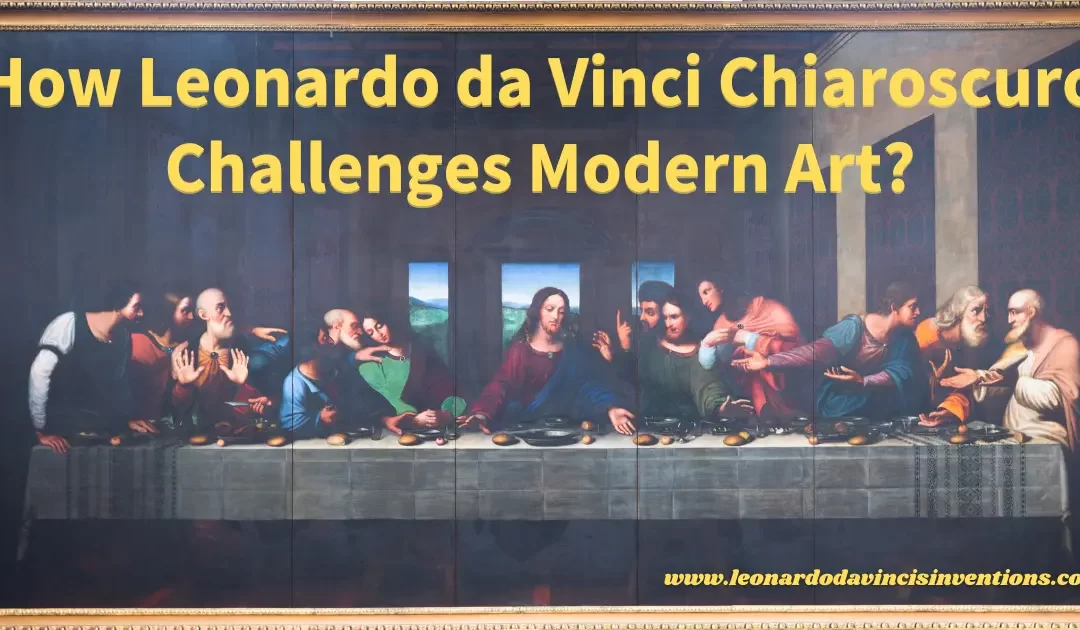
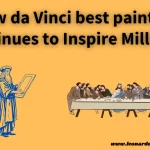
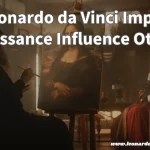

 Leonardo Bianchi,
the creator of Leonardo da Vinci's Inventions.
Thank you for visiting
Leonardo Bianchi,
the creator of Leonardo da Vinci's Inventions.
Thank you for visiting